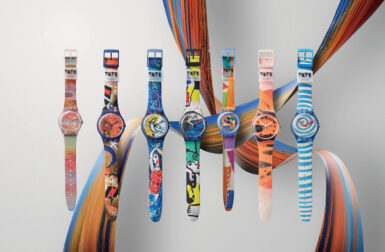Working from home sounds like the dream, right? You can work in your pajamas, set your own hours, and take your dog for a walk in the afternoon. You can squeeze in a workout or take a quick grocery trip so you don’t have to battle the 5PM crowd. It can be pretty awesome but, like any job, there can be downsides to working from home too. One con that never really manifests until you actually start working from home is the shift in collaboration and interaction between you and your colleagues. You can’t really give a quick ring or stop by their office on your way to the printer to chat about a project anymore. So what do you do? Text or call them? Send them an email? What if it’s urgent? What if it’s complicated to explain over both phone and email? Skype? Great, now you’ve got to get out of your pajamas.
Even if you don’t work at home, collaboration can be a challenge… Projects of any size can quickly get out of control. Let’s say you’re working with a team that keeps getting bigger, your project scope expands, and now there are too many emails floating around with attachments and links to files all over the place—in the end, you can’t keep up. You need a central place where all that communication, information and conversation can happen. In other words, all these cooks need one kitchen.
Fortunately, engineers and designers, like those at Dropbox, are developing the tools so that we can work better, smarter, and faster whether we’re inside the office, or anywhere else. The only thing we have to do…is adopt these tools and use them. But is it easier said than done though? Let’s find out.
Meet Ryan Scheuermann, an engineering manager at InVision who collaborates with the company’s large pool of remote employees to execute projects for an impressive portfolio of the world’s top innovative companies like Facebook and Twitter. He shares how the introduction of Dropbox Paper, Dropbox’s newest solution for improving collaboration across teams, changed his (and InVision’s) workflow to be more efficient and timely. If you need tips for improving your own creative process, whether you’re working in your pajamas or business casual attire, read on.
So let’s start with InVision. For those of us who aren’t engineers or UI/UX designers, can you explain in layman’s terms what InVision is?
InVision is an award-winning product design collaboration platform used by over 2 million people worldwide. InVision simplifies virtually every aspect of the product design workflow and makes collaboration a core part of the process, for everyone from project managers to designers, to developers and writers. At our core, we do two things – allow you to rapidly prototype at the front end of the product design process, and second collaborate across every stage of the design process. We make it easier to create working prototypes and socialize across the company, and we’re doing this with some of the most innovative companies in the world like Facebook, Twitter, Netflix, Airbnb and many others.
What makes Paper stand out and become invaluable to you and your team?
With Paper, our remote team of 300+ employees can create, review and organize content, assign owners and set deadlines, in one easy to access workspace. It’s intuitive, flexible, and simple by design—which is core to our business.
Creating a new product is an interdepartmental undertaking that weaves team members across an organization together so the more cross-collaboration, the better the product. Over time, we are seeing with combined usage of tools like Paper and InVision more innovative products coming to market that understand and fit users needs.
Do you have a memorable success story you can recall while using Paper?
While designing and building our latest tool Inspect, Paper made every step of the way easy — from dropping in links to design mock ups, to easily sharing technical specs across teams, to managing multiple rounds of reviews.
InVision was an early adopter of Paper, right? You started utilizing it internally while it was still in beta form. Can you describe what that was like? Was it easy or challenging to introduce Paper into your work system?
The adoption of Paper within InVision happened very organically. One or two individuals started sharing Paper documents for collaborating on new projects, and as new individuals interacted with Paper, they saw the speed and flexibility Paper offered over existing tools. At InVision, there is no mandate for the tools we utilize to get work done, which makes organic adoption very easy.
What are some of your favorite features about Paper?
As an Engineering Manager at InVision, I use Dropbox Paper to collaborate with my team on all sorts of documents, from weekly status reports, product specs, to meeting notes. We recently relied heavily on Paper to plan and prepare for a big company milestone, the release of our latest design-to-development tool, Inspect. As an entirely remote team, it’s critical we centralize our projects, stay up-to-date on progress, and have an easy place to voice opinions and exchange ideas. No matter where my team may be, Paper has made it incredibly easy for everyone to stay organized, informed, and aware of what’s going on at all times.
Dropbox Paper was the first choice by our design and product teams, due to its seamless UI/UX and its lightweight interface, which allows us to get up and running with projects quickly. Also, the ability to subscribe and unsubscribe from a document, as well as tag others to subscribe them to a document, is incredibly valuable for transparency so everyone on the team always know status of a given project.
Last month, Dropbox gave users the ability to assign due dates to task lists, which the engineering and marketing teams have adopted to stay aligned on product launches and announcements. This feature reduces the need for “status” meetings, which everyone loves.
In your opinion, what’s the key to effective collaboration and successful projects, especially for people working abroad and remotely?
Nothing grinds a project to a halt faster than long communication turnaround times. If someone on your team needs an answer to a tough question and they have to wait longer than a few minutes to get that answer, they risk context switching and falling out of “flow”. This is made exponentially worse when they have to wait hours or days due to timezone differences. Direct person-to-person communication results in isolated information sharing, and effective collaboration products recognize that communication needs to happen in the open, visible and accessible to all stakeholders on the project.
This is why my absolute favorite features of Paper are the real-time notifications for comments or replies on a document, and the informative and timely email notifications of changes made to a document. This keeps all that communication flowing and visible.
What advice would you have given your past self early on in your career?
Early in my career, I was always eager to solve a problem, even if that meant taking on the responsibility myself and working around those who I perceived to be in the way. My advice would be to have patience with others. It takes time to build consensus and find solutions that account for more than just your needs. Accept things may take longer but know that the outcome will be far greater when a team comes together to solve the problem instead of you playing the hero.
What advice would you give someone who is hesitant to introduce yet another app and platform into their life?
For most people, when they’ve been using a tool to solve a problem for a long time, they instinctually ignore the times when it’s slowing them down or failing them in some way. They’re in denial about the app and they just plod forward, setting problems aside as “quirks” they have to work around. My advice is: pay attention to those moments. Don’t ignore them. Let yourself feel them. This discontented space is where product designers live every day, and they’re building new apps and platforms to iteratively solve those problems for you.
Thanks, Ryan! Try Paper for free at dropbox.com/paper.
This is a sponsored conversation written by the Design Milk team on behalf of Dropbox. The opinions and text are all ours.






















